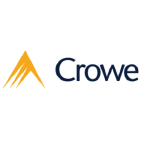The variable capital company (VCC), which was launched in January 2020, is a new corporate structure for investment funds constituted under the Variable Capital Companies Act.
Despite the economic uncertainties due to the pandemic fallout, the VCC is receiving strong interest from the fund management industry in Singapore and abroad. Since the launch, 123 VCCs have been registered with the Accounting and Corporate Regulatory Authority as of September 11 2020. This averages one VCC registered every two days.
The VCC allows for several collective investment schemes to be gathered under the umbrella of a single corporate entity with segregated assets and liabilities. This will help fund managers to incorporate multiple funds in a single VCC and thereby achieve cost efficiencies. The VCC can also be used as a vehicle for a single collective investment scheme.
Given the unique characteristics of the VCC vehicle, a tax framework for the VCC has been established through changes to relevant existing tax laws. The Inland Revenue Authority of Singapore (IRAS) published an e-tax guide on August 28 2020 to provide guidance on the tax framework. In this article, some of the key features of the tax framework as laid out in the guide are discussed.
VCCs are like companies for income tax purposes
VCCs incorporated under the VCC Act shall be treated the same as companies incorporated under the Companies Act. This means a reference to a company in the Income Tax Act (ITA) and the subsidiary legislation made under it includes a VCC, subject to modifications where applicable. The broad implications of this are as follows:
1. Tax residency
A VCC will be considered a Singapore tax resident for a particular year of assessment if the control and management of its business was exercised in Singapore in the preceding calendar year. Where the control and management is exercised is largely a question of fact. The location of the meetings of the VCC's board of directors, during which strategic decisions are made, will be considered as a key factor by the IRAS in determining where the control and management is exercised.
2. Determination of income
A VCC, in determining its income, can avail itself to tax deductions, tax exemptions, corporate income tax rebates and tax reliefs that are available to a company. However, given that the VCC is a corporate structure for investment funds, certain deductions and reliefs under the ITA are specifically excluded for a VCC under Sections 107(11) and 107(12) of the ITA.
For example, deductions for research and development expenses will not be allowed to a VCC. The group relief provision, which allows current year tax loss items from a loss-making entity to be transferred to another tax paying entity if both entities are substantially related to each other, is also not available to a VCC.
3. Dividend distribution
A tax resident VCC can pay tax exempt dividends to its shareholders. There is no withholding tax on dividends paid to non-resident shareholders.
4. Tax treaty relief
In order to support its claims for reliefs under the tax treaties concluded by Singapore with more than 80 jurisdictions, a Singapore resident VCC can apply to the IRAS for a certificate of residence (COR).
Tax incentives that are available to a VCC
The scope of tax incentives available to a fund vehicle setup in Singapore is also extended to a VCC. This includes the tax incentives provided under Section 13H for approved venture companies and Sections 13R and 13X for funds managed by Singapore based fund managers.
VCC with sub-funds
Where a VCC is setup as an umbrella with sub-funds, the tax framework provides for the following:
1) For an umbrella VCC with sub-funds, the residency of any sub-fund will follow that of the umbrella VCC. As a sub-fund of a VCC is not a legal person, the COR will be issued in the name of the umbrella VCC with the name of the sub-fund included in the COR.
2) The tax incentive conditions and the economic commitments under the applicable incentive schemes will be applied to the umbrella VCC rather than to the individual sub-funds.
3) The umbrella VCC is only required to file a single tax return regardless of the number of sub-funds it has. In this regard, the chargeable income or exempt income of an umbrella VCC is the aggregate of the chargeable income or exempt income of its sub-funds. In arriving at the chargeable income or exempt income of each sub-fund, the income tax rules, including the claiming of foreign tax credits, will be applied at the sub-fund level. However, where there is income chargeable to tax at the normal corporate tax rate, the partial tax exemption or the start-up tax exemption, whichever is applicable, and any income tax rebates will only be applied at the umbrella VCC level.
4) Consistent with the concept of segregated assets and liabilities, any unutilised loss items from a sub-fund cannot be offset against the chargeable income of another sub-fund. However, such unutilised losses of a sub-fund can be carried forward or carried back to offset against that sub-fund’s future or past income provided certain conditions are met.
5) For goods and services tax (GST) and stamp duty purposes, sub-funds of an umbrella fund will be treated as separate persons. This means that each sub-fund will have its own GST compliance obligations, for example, in ascertaining the need to be GST registered, and where stamp duty is applicable on a particular transaction, it will be levied at the sub-fund level.
In addition to the guidelines discussed above, the guide also addresses, among others, the modifications to the tax framework for a redomiciled VCC, the GST treatment of taxable supplies made by a VCC, and the stamp duty treatment on dutiable instruments for a VCC. For more information, please refer to the guide.
Sivakumar Saravan
T: +65 6221 0338 Ext. 815
Liew Kin Meng
T: +65 6221 0338 Ext. 833













